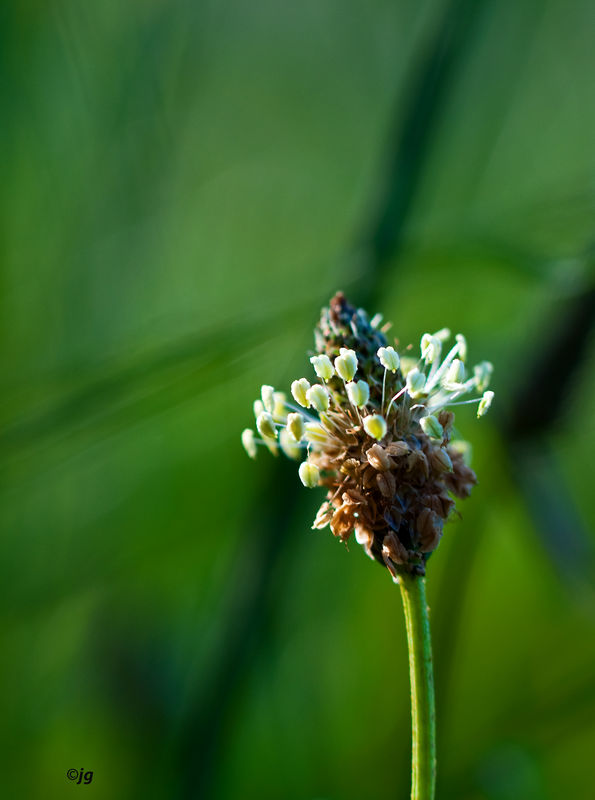60-mm versus 105-mm macro lenses
May 28, 2012 11:04:59 #
I have a Nikon D5000 with 2 kit lenses (18-55 and 70-210). I also use a Tamron 60mm F/2 Di, which I got when I asked a camera shop for something I could use for both bugs and portraits. I am very satisfied with the Tamron, which also makes a good walking-around lens. But I am considering a new lens to do some macros without having to get to within 3 inches for a 1:1. Would I be wasting money to buy the Nikon 105mm F/2.8 micro? Would I be better off with a longer lens (185mm)? How much quality would I lose if I just got an extension tube for the 60 mm? Your advice please.

May 28, 2012 11:15:48 #
i dont think you lose any quality with extension tubes, just distance. With a 105, you will still have to be around 6" to shoot 1:1 macros.tom
May 28, 2012 14:13:25 #
At Minimum Focusing Distance, a 60-mm macro lens has a Working Distance of 90-mm (3.5-inches) to achieve 1:1. With extension tubes, WD is even shorter for higher magnifications.
At MFD, a 105-mm macro lens has a WD of 160-mm (6.2-inches) to achieve 1:1.
At MFD, a 200-mm macro lens has a WD of 300-mm (11.8-inches) to achieve 1:1.
Personally, for insect macro-photographs, I use my 105-mm macro lens, between 6-inches to 12-inches WD. Desired WD should be the determining factor in macro lens choice. Documenting stamps and coins can be easily handled with a 40-mm lens, whereas macro-photographs of stinging ants would be best with a 200-mm macro lens.
Obviously, cost, manufacturer reputation, and lens performance are also factors, and each photographer will have personal priorities.
At MFD, a 105-mm macro lens has a WD of 160-mm (6.2-inches) to achieve 1:1.
At MFD, a 200-mm macro lens has a WD of 300-mm (11.8-inches) to achieve 1:1.
Personally, for insect macro-photographs, I use my 105-mm macro lens, between 6-inches to 12-inches WD. Desired WD should be the determining factor in macro lens choice. Documenting stamps and coins can be easily handled with a 40-mm lens, whereas macro-photographs of stinging ants would be best with a 200-mm macro lens.
Obviously, cost, manufacturer reputation, and lens performance are also factors, and each photographer will have personal priorities.
May 28, 2012 22:18:43 #
Thank you for your reply. Obviously I still have some research to do. I didn't know that extension tubes only allow you to get closer.
I think I will go with the 105mm Nikon lens after all. It does have a great reputation.
Jared
I think I will go with the 105mm Nikon lens after all. It does have a great reputation.
Jared
May 29, 2012 05:52:19 #
Extension tubes will work for variable focus lenses. Helicoids (variable length tubes) can be used for fixed focal length lenses. I am using helicoids with El Nikkor enlarging lenses for both telephoto and macro in UV/VIS/IR.
May 29, 2012 13:22:34 #
dlwhawaii wrote:
Variable focus lenses = standard macro lenses.Extension tubes will work for variable focus lenses. Helicoids (variable length tubes) can be used for fixed focal length lenses. I am using helicoids with El Nikkor enlarging lenses for both telephoto and macro in UV/VIS/IR.
Fixed focus = non-focusing lenses, like enlarging lens, where bellows or helicoids are required t o achieve focus.
Helicoid = telescoping extension tube = no communication between camera & lens = no A-F & no auto aperture. Recommended for experienced macro-photographers only. http://savazzi.freehostia.com/photography/focusing_helicoid.htm
May 29, 2012 13:36:19 #
By variable focus, I did not mean zoom. I have a 50mm macro lens with variable focus, i.e. I can adjust the focus from close-in to infinity. It has nothing to do with zoom. Perhaps when I said telephoto I should have stated they are fixed focal length lenses and require helicoids for focusing. I do use the helicoid for my fixed focus lenses all the way from 6" to infininity. The only thing variable on the fixed focus lenses is the aperture. :-)
May 29, 2012 13:38:32 #
dlwhawaii wrote:
How does this differ from a standard macro lens?By variable focus, I did not mean zoom. I have a 50mm macro lens with variable focus, i.e. I can adjust the focus from close-in to infinity.
May 29, 2012 13:46:06 #
The lens is a Sigma 50mm f2.8 prime lens capable of macro (1:1). To focus there is a focus adjust ring on the lens to allow focusing close-up to infinity. The aperture is fixed.
May 29, 2012 13:52:37 #
dlwhawaii wrote:
Aperture is fixed at f/2.8? The lens is a Sigma 50mm f2.8 prime lens capable of macro (1:1). To focus there is a focus adjust ring on the lens to allow focusing close-up to infinity. The aperture is fixed.
Does not sound efficient for macro-photography. At 1:1 magnification, the DOF would only be a few millimeters, at best.
May 29, 2012 14:06:31 #
I don't have an answer for that. I've never used the 50mm in macro mode. I just checked my 180mm f3.8 macro and it has no adjustment for aperture either. I'm attaching a picture of an Iris? that I took with the 180.
Iris?

May 29, 2012 14:23:51 #
I just put my 50mm on the camera and used Aperture priority and the lens changed apertures. There is no manual adjustment for aperture. I am asssuming that since the aperture is adjustable on the camera and not the lens that DOF would be satisfactory for 1:1. By the same reasoning I am assuming the same would hold for the 180mm. I just learned something today. Thank you. :thumbup:
May 29, 2012 15:25:35 #
dlwhawaii wrote:
The exif info of your iris close-up image (not a macro) states 115-mm focal length, 1/125-sec at f/4.5 with ISO 200.I just checked my 180mm f3.8 macro and it has no adjustment for aperture either. I'm attaching a picture of an Iris? that I took with the 180.
May 29, 2012 15:29:40 #
dlwhawaii wrote:
Your lenses are auto-aperture with NO external aperture control. Electronic connection between camera and lens must be maintained for auto-aperture, via direct connection or auto-extension tubes. Straight tubes, bellows, and/or helicoid tubes disable auto-aperture.I just put my 50mm on the camera and used Aperture priority and the lens changed apertures. There is no manual adjustment for aperture. I am assuming that since the aperture is adjustable on the camera and not the lens that DOF would be satisfactory for 1:1. By the same reasoning I am assuming the same would hold for the 180mm.
If you want to reply, then register here. Registration is free and your account is created instantly, so you can post right away.



